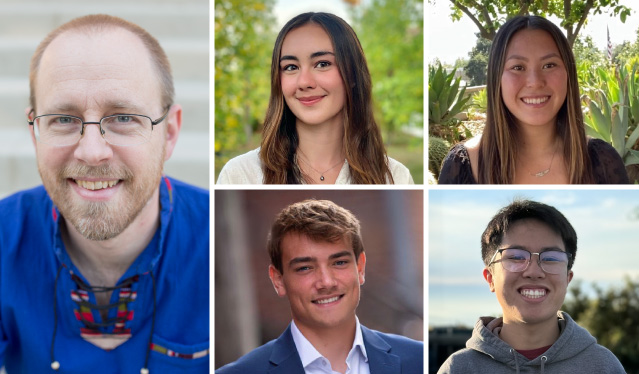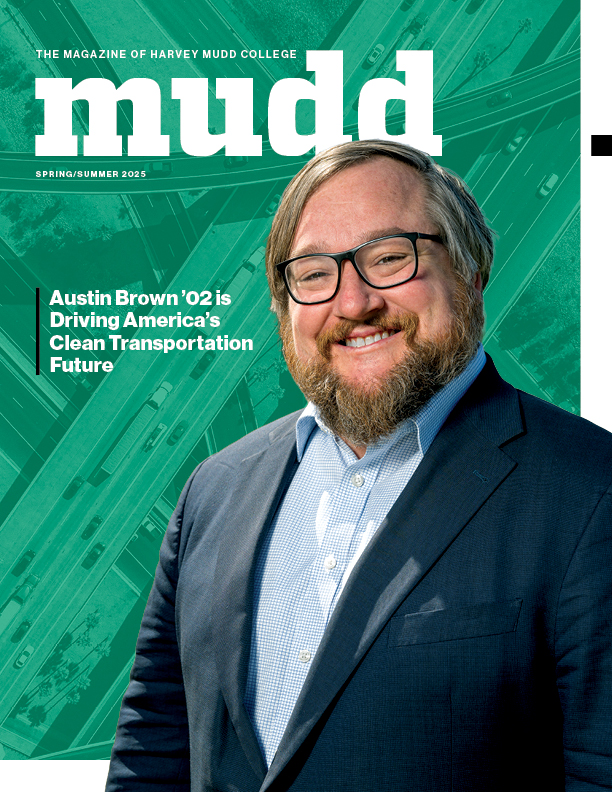Carbon-carbon Bonds Study Published by Vosburg and Students Shows Surprising Result
October 16, 2024
Creating carbon-carbon bonds using mild, effective and environmentally friendly methods is a surprising result featured in a newly published paper by Donald A. Strauss Professor of Chemistry David Vosburg and four students—Sydney Neibert ’24, Kasey Chung ’25, Grant Miller POM ’25 and Johnson Ho ’27. The paper, featured in the American Chemical Society journal Organic Letters, is the third for Vosburg’s team published in collaboration with Greg Beutner, a process chemist at global pharmaceutical Bristol Myers Squibb (BMS).
In previously published findings, Vosburg’s team and BMS collaborators demonstrated safer and “greener” ways to form carbon-nitrogen, carbon-oxygen and carbon-sulfur bonds. The latest paper features their newest research finding—that carbon-carbon bonds can also be created using such methods.
“Our prior results were impressive, but not necessarily surprising,” says Vosburg. “Being able to make carbon-carbon bonds using this chemistry is much less expected.”
The team incorporated existing knowledge of relative reactivity of carbon compounds and supplemented it with computational estimates of reactivity. Vosburg credits Beutner with being an excellent collaborator and insightful co-advisor to the students. “Throughout the process, this close collaboration was critical to the rapid progress and success of our work,” says Vosburg.
Vosburg’s lab provides research students with opportunities to make medicinally useful molecules in new ways that imitate natural pathways and/or are environmentally sustainable. Some of their target molecules can be used to fight inflammation, bacteria, fungi, tuberculosis or cancer. Often, the research team creates molecules that have never been created before.
As for the students’ future plans, Neibert is pursuing a PhD in chemistry at the University of Michigan. Chung, Miller and Ho—who also anticipate pursuing research as PhD students after graduation—will present their work at the Southern California Conference for Undergraduate Research at Cal State San Bernardino and have submitted an abstract to present at the spring 2025 national meeting of the American Chemical Society in San Diego.
“It’s been fabulous undertaking this research with such outstanding students,” says Vosburg.
